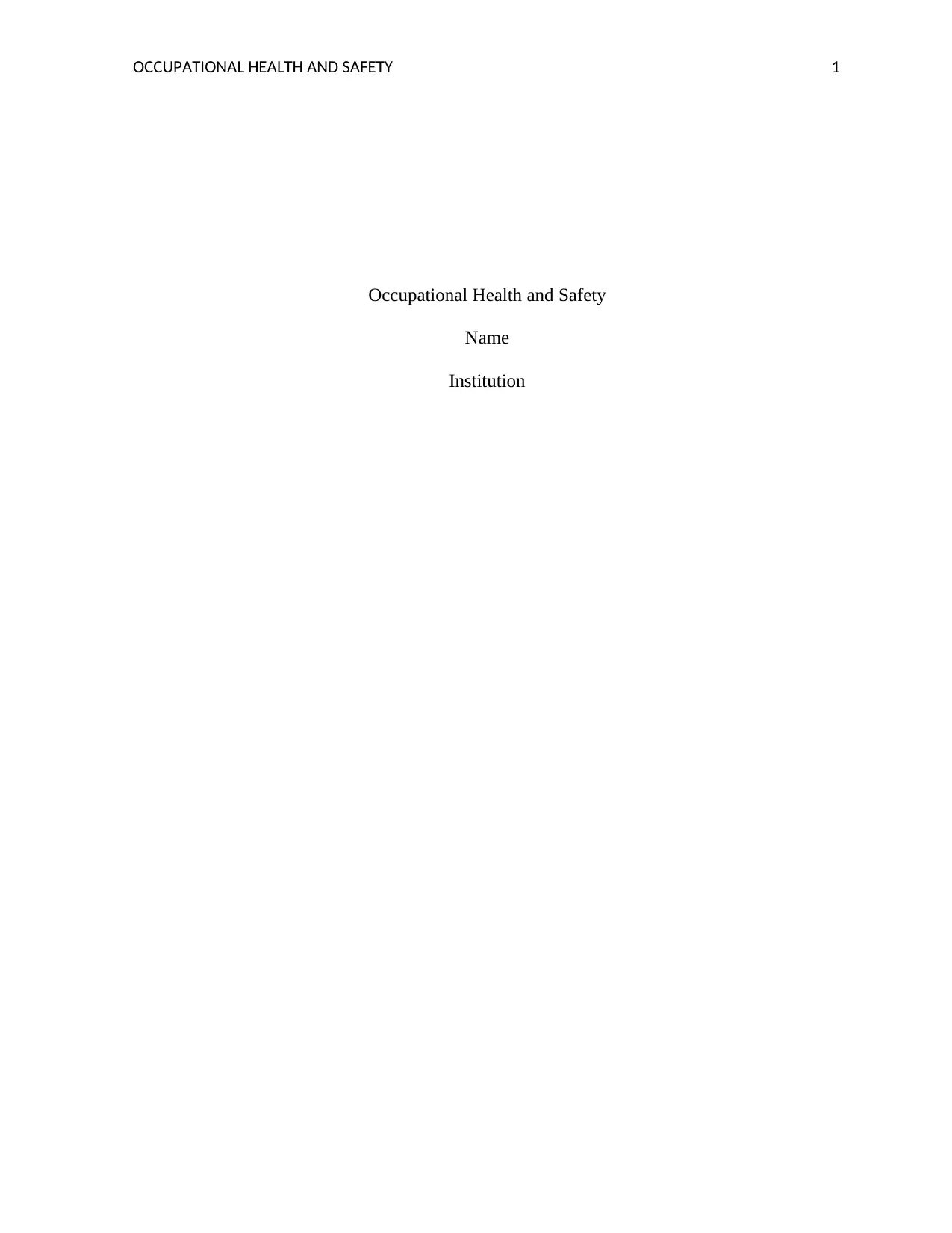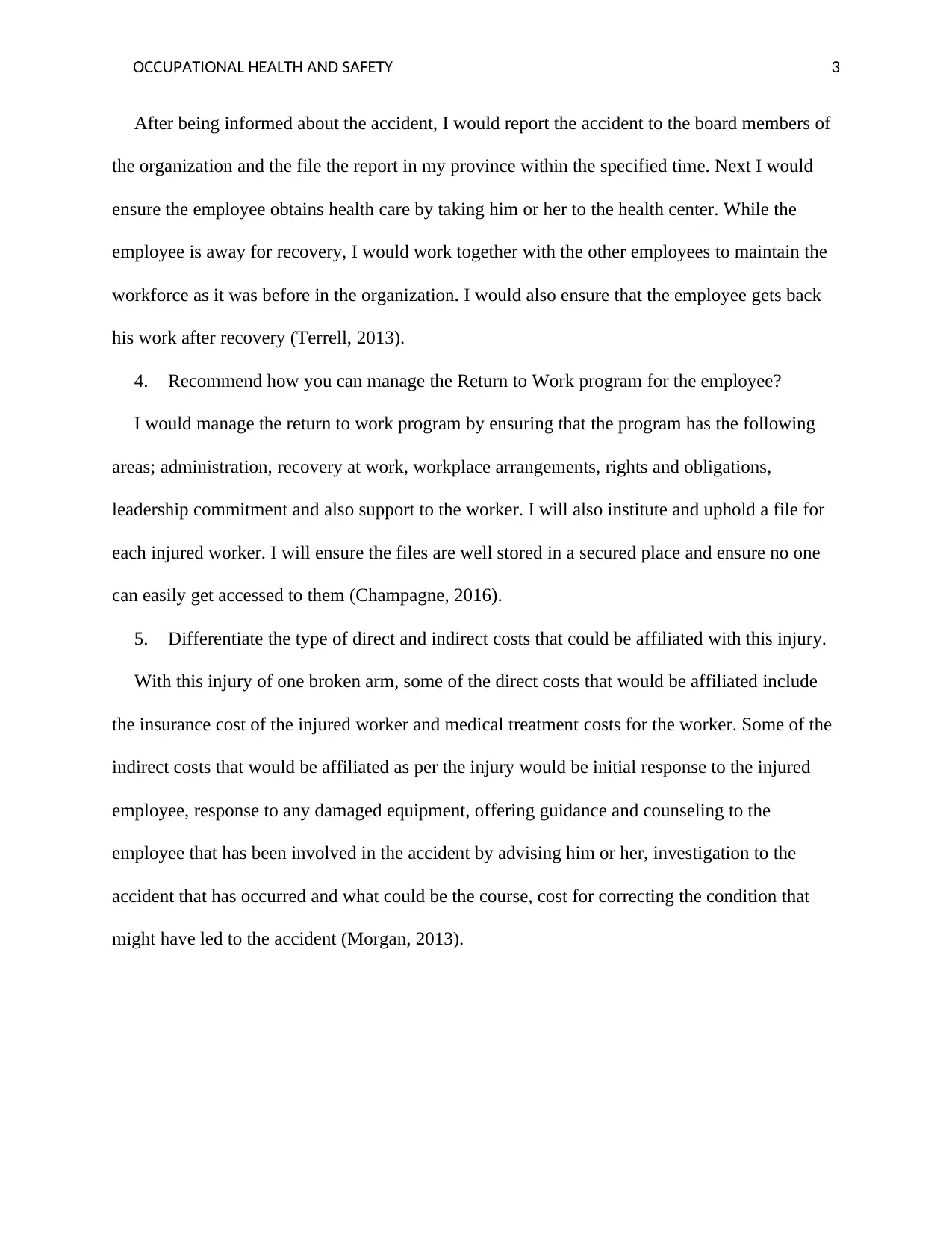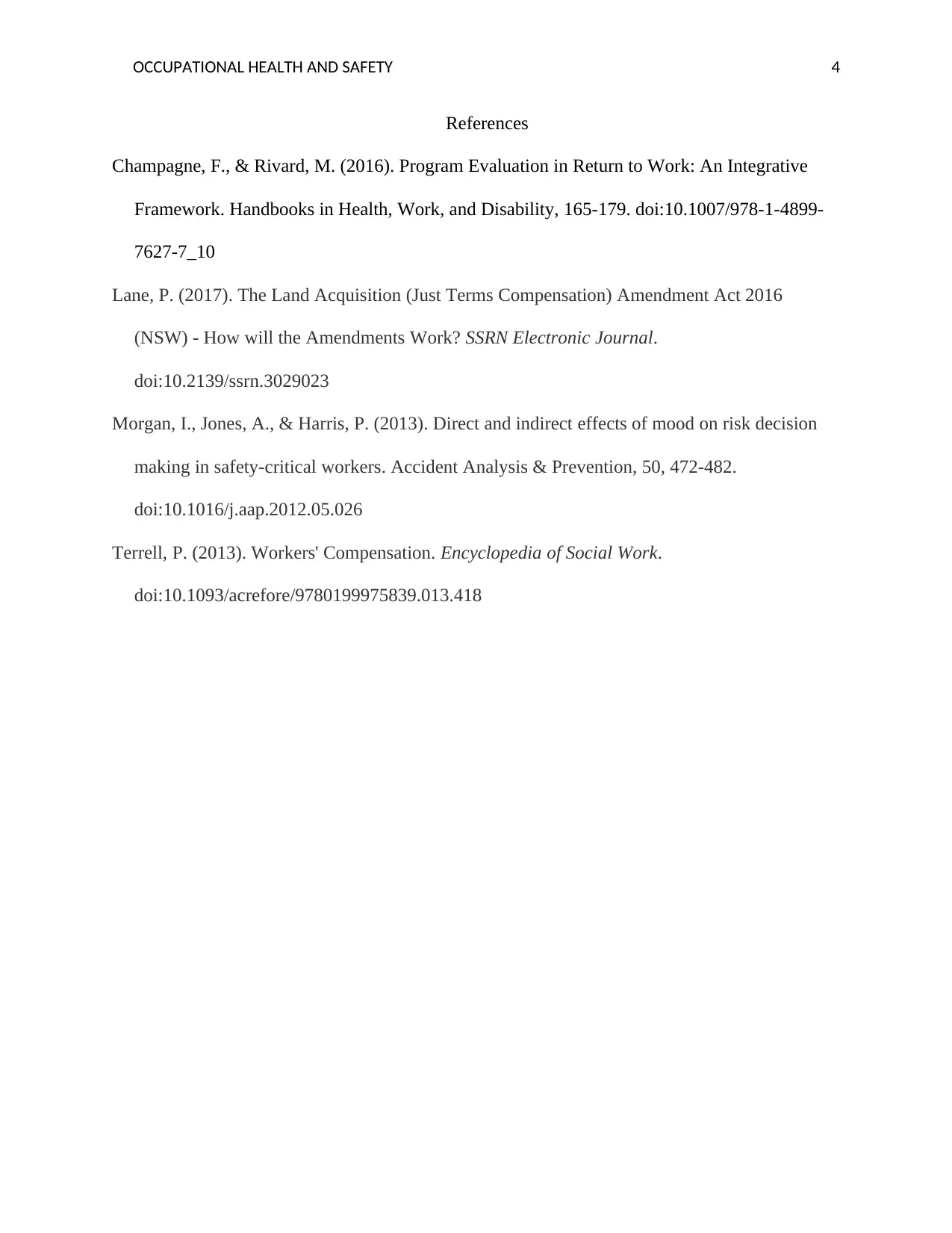Case Study: Analyzing Workers Compensation Act for Engineered Air
VerifiedAdded on 2022/10/17
|4
|805
|17
Case Study
AI Summary
This case study analyzes the Workers Compensation Act of Alberta from the perspective of a Human Resource professional at Engineered Air. The assignment addresses a workplace accident involving an employee with a broken arm and concussion, requiring investigation and outlining the purpose of the Act, the duties of both the employer and employee, and the subsequent steps to be taken. The solution details accident reporting procedures, employee healthcare, and the allocation of the injured employee's workload. Furthermore, it recommends a comprehensive Return to Work program, encompassing administration, recovery, workplace arrangements, rights and obligations, leadership commitment, and worker support, along with a system for securely storing employee files. The direct and indirect costs associated with the injury are also differentiated, providing a complete overview of the incident management process.
1 out of 4











![[object Object]](/_next/static/media/star-bottom.7253800d.svg)